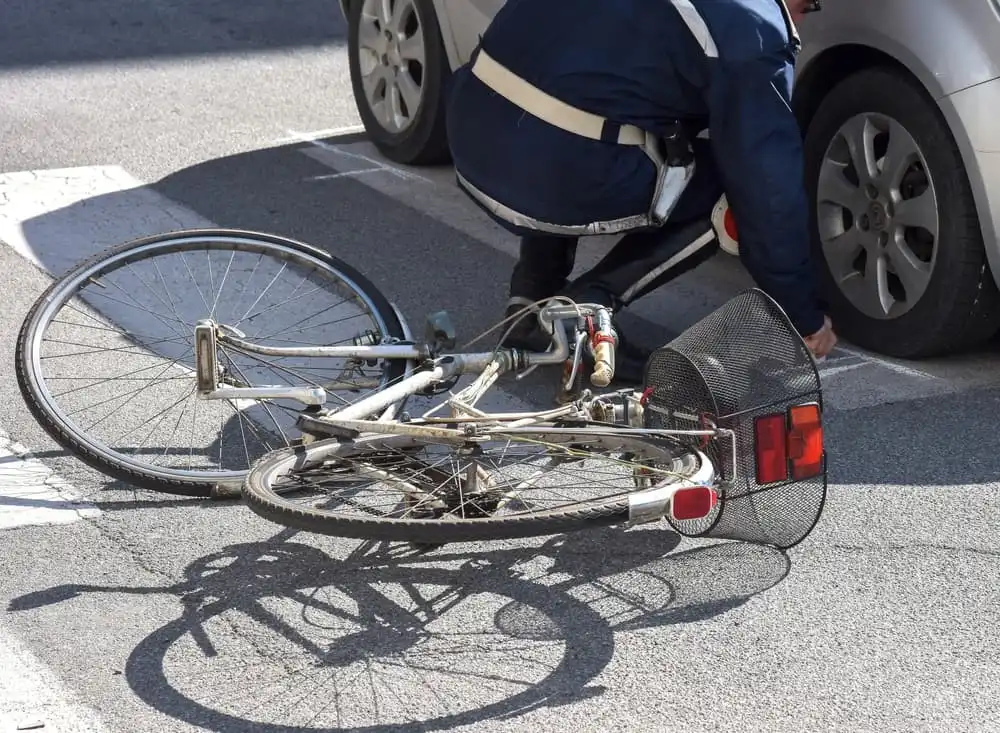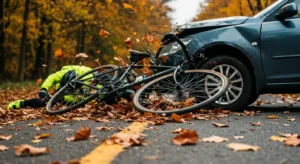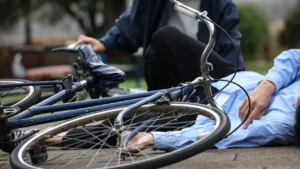While bike accidents and car accidents share similarities in that both can result in serious injuries, there are key differences in how they occur, the types of injuries sustained, and the legal processes that follow. Understanding these differences is crucial for cyclists and motorists alike, especially when it comes to navigating the aftermath of a crash.
In this blog, we’ll explore how bike accidents differ from car accidents, the unique challenges bike accident victims face, and what you need to know about pursuing a claim or lawsuit in the aftermath of a bike collision.
1. The Nature of Bike Accidents vs. Car Accidents
The fundamental difference between bike accidents and car accidents lies in the vulnerability of the rider. A bicycle offers no protection other than the rider’s own gear, such as a helmet and padded clothing, while a car has a sturdy frame, airbags, and seat belts designed to protect occupants.
A. Vulnerability of the Rider
-
Bike Accidents: Cyclists are exposed and unprotected, meaning they are more likely to sustain serious injuries, even in low-speed crashes.
-
Car Accidents: Drivers and passengers are surrounded by the car’s frame and often have the added protection of airbags and seatbelts.
This difference in protection makes bike accidents more likely to result in severe injuries, such as head trauma, broken bones, or road rash, even at lower speeds.
B. Vehicle Size and Weight
-
Car Accidents: Cars are significantly heavier and larger than bicycles, which can cause more forceful impacts in collisions.
-
Bike Accidents: Bicycle collisions, while potentially serious, generally involve less force because of the smaller size and weight of the bike.
However, the force of impact in bike accidents can still cause devastating injuries when a car or truck is involved. The cyclist’s lack of protection means that even moderate-speed collisions can result in serious harm.
2. Types of Injuries in Bike Accidents vs. Car Accidents
Because bicycles don’t offer the same level of protection as cars, the types of injuries cyclists sustain can be significantly more severe. Let’s look at the most common injuries for each type of accident.
A. Common Injuries in Bike Accidents
-
Head Injuries: Cyclists are more prone to head injuries, such as concussions and traumatic brain injuries (TBI), especially if they aren’t wearing a helmet or if the helmet is not designed to absorb impacts effectively.
-
Road Rash: When a cyclist falls and slides along the pavement, it can cause severe abrasions to the skin, also known as road rash.
-
Fractures and Broken Bones: Common injuries include broken arms, legs, wrists, and collarbones, often due to the sudden impact of a crash.
-
Spinal Cord Injuries: Bike accidents, particularly those involving falls from a height or high-speed crashes, can lead to serious spinal injuries.
B. Common Injuries in Car Accidents
-
Whiplash: A sudden jerk of the head caused by the force of the crash, leading to neck pain and stiffness.
-
Internal Injuries: The protective shell of a car can prevent obvious external injuries, but internal injuries like organ damage or bleeding can be just as dangerous.
-
Fractures and Lacerations: Car accidents often result in broken bones and deep cuts, especially if the airbags or seat belts fail to deploy properly.
-
Soft Tissue Injuries: Like strains, sprains, and muscle tears, which can be caused by the force of the collision.
Although both types of accidents can lead to severe injuries, bike accidents more commonly involve injuries related to the cyclist’s exposure, such as head trauma and abrasions, which are less common in car accidents.
3. Legal and Insurance Considerations: How They Differ
The legal landscape surrounding bike accidents is different from car accidents in terms of insurance claims, fault, and compensation.
A. Insurance in Bike Accidents
-
Bike Accidents: In many bike accident cases, the cyclist is not covered by insurance unless they have their own personal injury protection (PIP) or medical payments coverage. If the cyclist is involved in an accident with a motor vehicle, the driver’s insurance may be liable, but dealing with insurance companies can be more complicated.
-
Car Accidents: Car accident victims are typically covered by their own auto insurance (if they have PIP or full coverage), and car accidents tend to be handled by the insurance company based on fault and liability.
B. Determining Fault in Bike Accidents
-
Bike Accidents: Determining fault in bike accidents can be more complex, particularly when it involves a cyclist and a motor vehicle. Bicycle riders may be required to prove that the motorist was negligent (for example, running a red light, failing to yield, or driving distracted). The cyclist’s behavior (such as riding without a helmet or disobeying traffic laws) can also be a factor in determining fault.
-
Car Accidents: Fault in car accidents is typically clearer, particularly when there are multiple vehicles involved. However, in cases of rear-end accidents, lane merging, or head-on collisions, it’s easier to pinpoint who caused the accident.
C. Compensation for Bike Accident Victims
-
Bike Accidents: Compensation for bike accident victims can be more challenging. Cyclists may struggle to get a fair settlement from insurance companies, especially if they don’t have personal insurance coverage or if the motorist’s insurance attempts to downplay the severity of the accident. Legal representation is often necessary to ensure proper compensation for medical bills, lost wages, and pain and suffering.
-
Car Accidents: Car accident victims typically have more straightforward access to compensation through their own insurance or the other driver’s insurance. If the car accident involves a serious injury, victims may receive compensation for both economic and non-economic damages.
4. The Role of Helmets and Safety Gear
Helmets are one of the most critical safety measures for cyclists. While seatbelts and airbags are standard in cars, cyclists are entirely dependent on their helmets for head protection.
A. Helmet Use in Bike Accidents
-
Importance of Helmets: Wearing a helmet is crucial in preventing head injuries. In fact, studies show that helmets reduce the risk of head injury by up to 70%.
-
Helmet Laws: Some states or local jurisdictions require cyclists to wear helmets, while others may not. Regardless of the law, wearing a helmet is always a wise choice for safety.
B. Safety Gear in Car Accidents
-
Seat Belts and Airbags: Seat belts and airbags are essential in preventing injury during a car accident. The combination of both safety features reduces the risk of injury and death in high-speed collisions.
-
Car Safety Features: Cars also have other safety features, such as crumple zones and reinforced frames, that protect drivers and passengers during crashes.
5. What to Do After a Bike Accident
No matter whether you’re in a bike or car accident, the steps you take after the crash are crucial for both your health and any potential legal claims.
A. Steps to Take After a Bike Accident
-
Seek Medical Attention: Even if you feel fine, always seek medical attention after a bike accident. Some injuries, such as concussions, may not show symptoms immediately.
-
Document the Scene: Take photos of the accident scene, your bike, and any visible injuries. If possible, get witness statements and the other driver’s contact and insurance information.
-
Contact a Lawyer: A personal injury lawyer experienced in bike accidents can help you navigate the legal complexities and ensure you get the compensation you deserve.
B. Steps to Take After a Car Accident
-
Call 911: Always report the accident to the authorities and wait for an officer to complete a report.
-
Exchange Information: Collect the insurance, driver’s license, and vehicle information from all parties involved.
-
Consult with an Attorney: If you’re injured, an attorney can help you understand your rights and file an insurance claim or lawsuit.
6. Conclusion
While bike accidents and car accidents may seem similar in nature, there are significant differences in terms of injuries, insurance claims, and legal processes. Understanding these differences is essential for cyclists and drivers alike. If you’ve been involved in a bike accident, it’s important to know your rights and consult with a lawyer to ensure that you receive the compensation you deserve.
Whether you’re a cyclist or a motorist, always prioritize safety by wearing a helmet, following traffic laws, and being aware of your surroundings. These steps will not only protect you but also contribute to making the roads safer for everyone.








